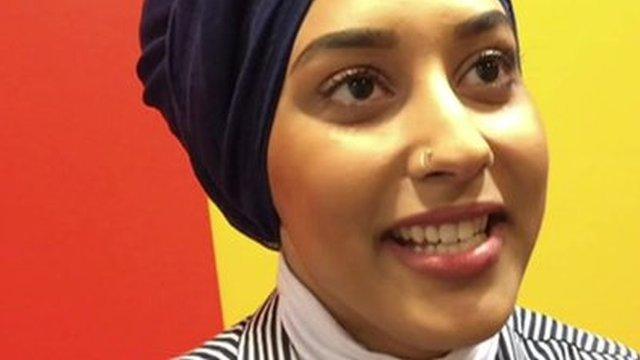Meet Shahira Yusuf, one of Britain's first hijab-wearing models
- Published
"I don't want to be considered a token girl"
Looking at 20-year-old Shahira Yusuf, you might not guess she's tipped to be the fashion world's next big star.
But London-born Shahira isn't just any new kid on the runway. She is going to become one of Britain's first hijab-wearing catwalk models.
"I was first spotted by a modelling scout when I was 17. But I wasn't ready then," she says. "When you are young you are naive and live in this unrealistic sphere, you've got to be mature otherwise an industry like this can swallow you up."
We meet her in the busy offices of Storm management. Wearing a grey hijab, the softly-spoken model tells us she has clear boundaries about what she will and won't do. All her test shots show her fully clothed.
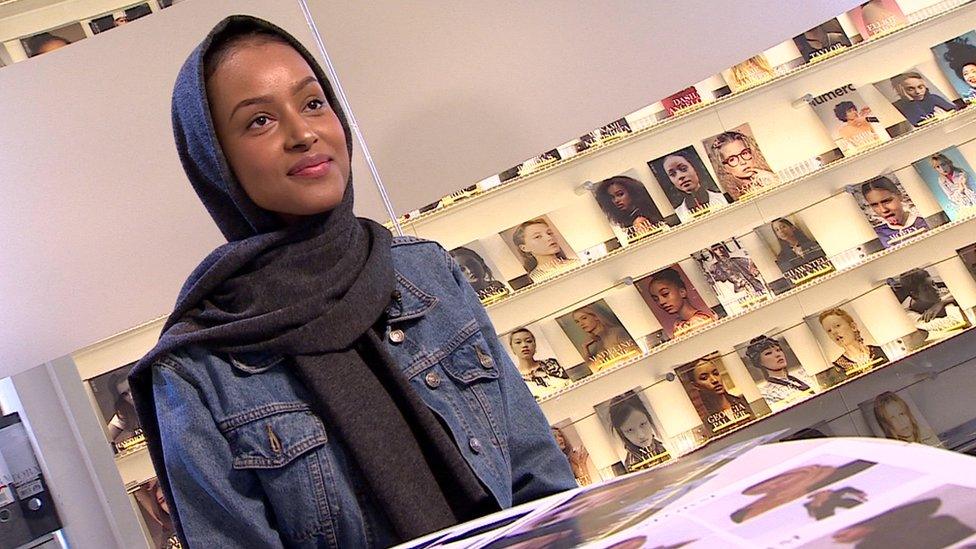
Shahira Yusuf has been signed to major modelling agency Storm
She was discovered by the agency's founder Sarah Doukas - who also discovered Kate Moss.
Last year, Shahira made headlines after posting a viral tweet, external with pictures of herself in an oversized grey suit. The caption read: "I ain't no Kendall Jenner but I'm a black Muslim girl from east London that's about to finesse the modelling industry."
Shahira was born in the UK but her family is originally Somali.
"I'm conscious of the fact that I'm visibly Muslim but it's not a huge deal," she says about wearing the hijab.
"I don't want to be considered the token girl. I don't want ethnic models or those from different religious backgrounds to just pave the way - I want the way to stay there, to become a norm within society because it is a norm outside of the modelling sphere."
She's proud of the fact she might be able to empower other young Muslim girls to do things they might consider out of their reach.
"It's good to give hope and motivation."
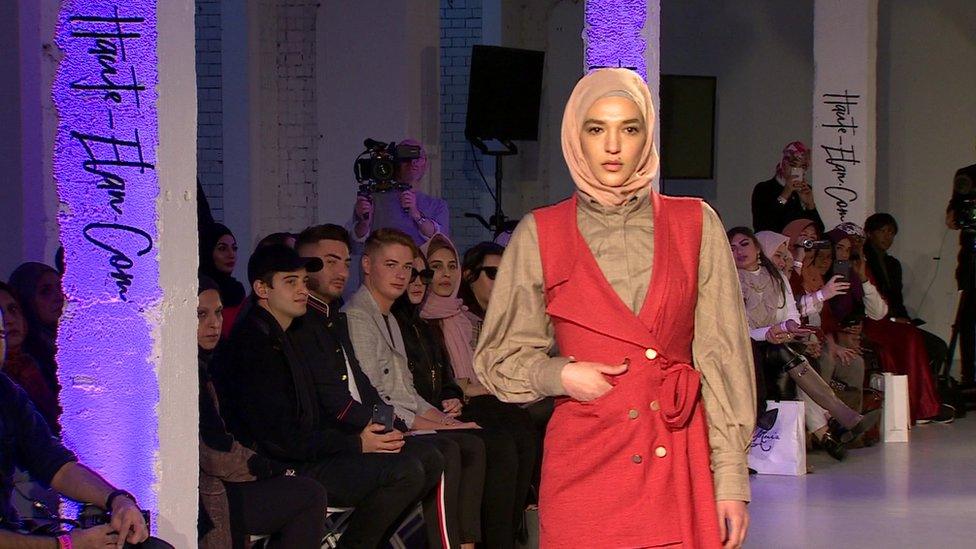
Shahira's agent Billy Mehmet looks after 50 new faces at Storm. She says signing a young woman like Shahira is not at odds with the usual demands of the fashion industry.
"The industry is changing," she says. "Our clients want girls who are more than just models, whether it's a girl who is an activist or an artist.
"Shahira will open the doors to a lot of other girls who wear the hijab to be able to think they can be a model and there is no reason why they can't be. Why shouldn't a girl with a hijab be a catwalk model?"
It's not just Shahira breaking new ground. More and more young British Muslim girls who wear the hijab are using fashion to make a statement. They do so mainly on Twitter and Instagram as beauty bloggers.
We see hundreds of them excitedly streaming into a central London venue for a Modest Fashion event. Wearing bright tunics, silk hijabs and long designer dresses, they take endless numbers of selfies to post on social media.
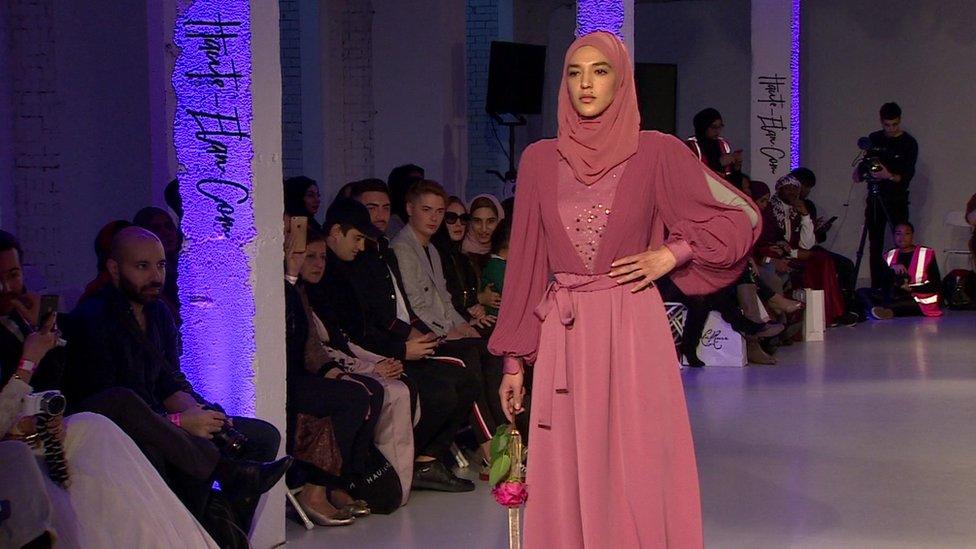
London Modest Fashion Week took place in February
They have serious spending power and are here to look at what Muslim designers from all over the world have to offer. Hijabs of every shape, size and colour are the accessory of choice.
A booming market
There are designer headwraps, head scarves and loose fitting maxi dresses, illustrating exactly why the Islamic fashion market is set to be worth, external $368bn (£267bn) by 2021.
In the world of sport, an impact is also being made. Earlier this year, sportswear giant Nike brought out its first sports hijab with Zahra Lari - the first ever figure skater to compete wearing a headscarf.
It's a real contrast to when we were growing up in the UK. We are both from Muslim backgrounds, but wearing the hijab was not the norm, especially among young women.
When it was worn, it wasn't seen as a fashionable garment, but instead a quiet expression of conservative Islam.
So how has the hijab grown in popularity?
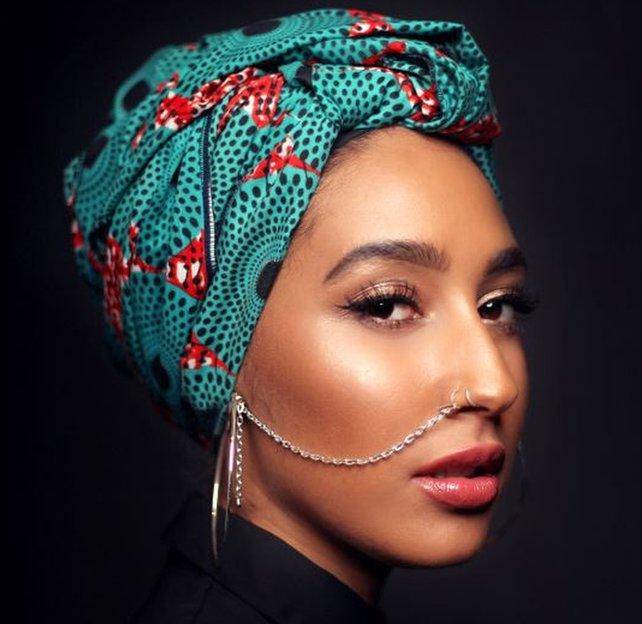
Mariah Idrissi has appeared in an advert for H&M
Faeeza Vaid from the Muslim Women's Network believes politics has played a part.
"While reasons for some include 'religious reasons', the hijab is part of an expression of identity in a context where their belonging is being challenged," she says.
"For many young people today, their history begins after 9/11, and young Muslims have grown up with nonsensical questions like 'are you British or Muslim?'. In being treated as an 'other' the need to belong becomes stronger, and so a shared religious identity is where many seek solace."
This is certainly true for 25-year-old Mariah Idrissi, external. With more than 70,000 Instagram followers, she is one of the breakout stars of social media at this Modest Fashion event. She's also appeared in an advert for H&M.
"I chose to wear a hijab about eight years ago," she says.
"It is a part of me and part of my career. It's part of my identity. I saw Western media not represent Muslims anywhere. The only people I saw represented were bad. So I wanted to be in the media and use the opportunity to do something different."
But if the hijab is about averting the gaze from the wearers, how do these women justify being fashion models?
Hijabs in fashion 'problematic' for some
There is a contradiction, some Muslims scholars say, in the way some young women wear the hijab. Dr Haifaa Jawad is the director of the Centre for Islamic and Middle Eastern Studies at the University of Birmingham.
She says Muslim girls with immaculate make-up and fashionable clothes but wearing the hijab can be seen as problematic.
"The aim of modest dress is to look modest, it is not to attract attention. The heavy, fashionable make-up defeats the aim of dressing modestly. The point of the hijab is not to provoke attention."
While Mariah Idrissi admits she does occasionally struggle with the balance, she also believes wearing a hijab and caring about how you look aren't mutually exclusive. Many young Muslim women won't hide away and instead feel more empowered by wearing the hijab, she says.
Some people object to the hijab entirely, seeing the cloth as oppressive and something to be feared. For them, there is almost an unshakeable assumption that a woman who covers up is being forced to do so by her father or husband.
There have been concerns that enforcement is happening in the UK.
But for the women we speak to, the key word is choice. If they wear the hijab, they say it's a sign of faith, feminism and crucially - because they want to. They look at its inclusion in the fashion world as a positive sign of integration.
For model Shahira Yusuf, the hijab is not designed to divide and her ambitions reflect that.
"My dream? The cover of British Vogue. That's my goal and my dream. After all I am British."

Follow us on Facebook, external, on Twitter @BBCNewsEnts, external, or on Instagram at bbcnewsents, external. If you have a story suggestion email entertainment.news@bbc.co.uk, external.
- Published23 June 2017
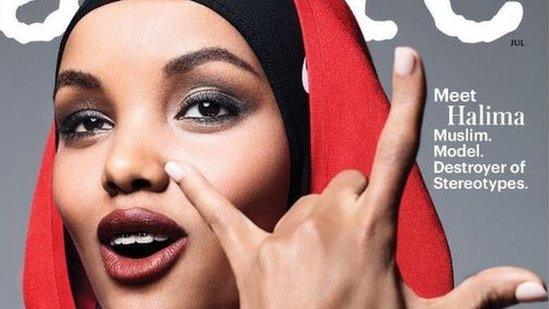
- Published4 May 2017
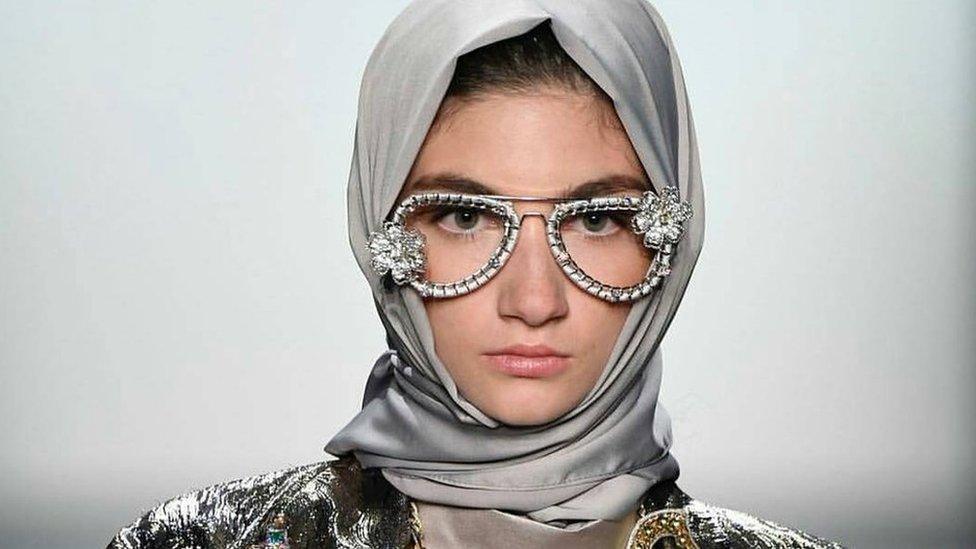
- Published15 March 2017

- Published16 September 2016

- Published30 September 2015
